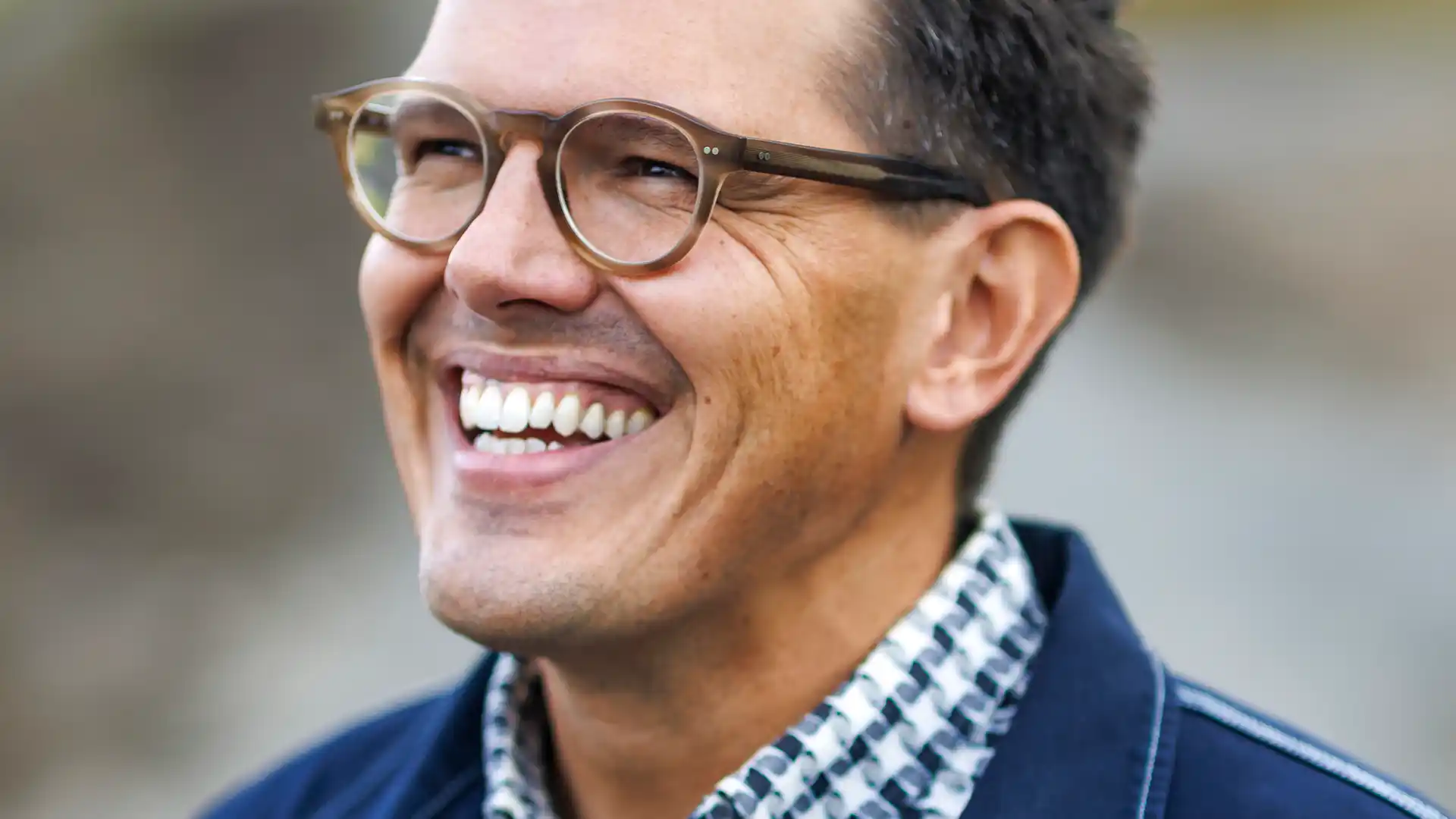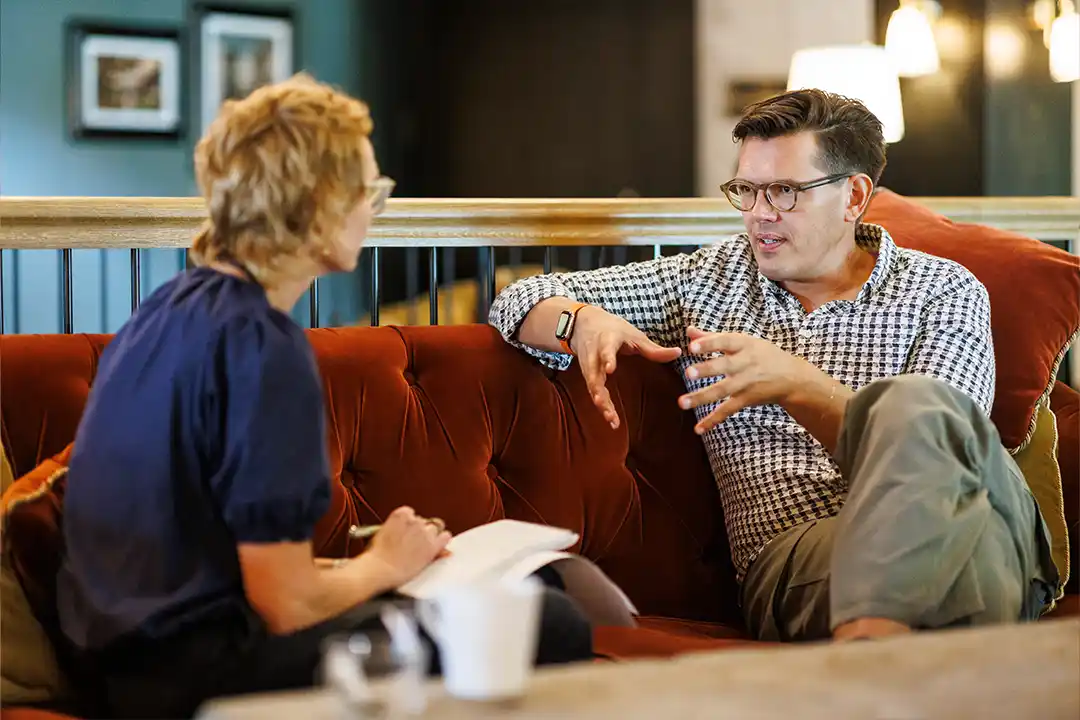“We need to embrace and explore uncertainty”
Nathan Furr’s thesis is that uncertainty and opportunities are two sides of the same coin. And he’s going to give leaders in Schibsted 42 different tools to navigate a world of uncertainty.
Words by Ann Axelsson

“We need to embrace and explore uncertainty”
Nathan Furr’s thesis is that uncertainty and opportunities are two sides of the same coin. And he’s going to give leaders in Schibsted 42 different tools to navigate a world of uncertainty.
Words by Ann Axelsson
“I strongly believe that we are missing a critical leadership capability in our modern world. The ability to face uncertainty and see the possibility.”
Nathan Furr is a Professor of Strategy at INSEAD and a renowned expert on managing in times of disruption and uncertainty. He’s also an author and co-author of several books. Now he’s leading a management program in Schibsted, using a framework he set up after years of working closely with startups, understanding their mindsets and how they handle risk and uncertainty.
And no doubt, we live in uncertain times. Choosing a path at a time when change is constant and happening fast can be very stressful. Nathan brings up generative AI as an example.
Confused with risk
“Uncertainty is when you don’t know all the variables involved. With AI we don’t know where it’s going to go. We don’t know how it will affect our careers or our lives. We don’t know what the future will be like.”
He also believes that uncertainty often is misunderstood and confused with risk – when you actually know the variables involved, you know the probability; you just don’t know the value you are going to get.
“Risks we can manage and control, but to handle uncertainty we need something different, we need to embrace it and explore it. Because if we see generative AI as a risk, we will probably avoid it and miss out on opportunities.”

Nathan Furr is leading a management program in Schibsted, using a framework he set up after years of working closely with startups.

Nathan Furr is leading a management program in Schibsted, using a framework he set up after years of working closely with startups.
This is where the framework and the 42 tools come in. But perhaps even more important is the perspective that this theory is not something reserved for only your work life. That insight was pushed by Nathan’s wife Susannah Harmon Furr, who is an entrepreneur, designer and art historian.
Together, they wrote the book that serves as a guide to the framework, called “The Upside of Uncertainty.”
All parts of life
Susannah helped Nathan understand that uncertainty is incorporated in all parts of people’s lives and even if he speaks to leaders, it starts with us as people, as human beings.
“And she was so right. All that uncertainty, it fires in your brain. You feel it in your gut. And to help others through it, I really believe you’ve got to start with yourself.”
In the book, Nathan and Susannah prove that. They share some private stories about their lives and their family, times when uncertainty was fundamental and when the framework helped them see the crisis from a new perspective. Like when their son became very depressed in the aftermath of the COVID-19 pandemic, and they had to watch over and care for him. The tool they speak about is reframing.
“We reframed in that moment to focus on what we still had. And that was each other, the capacity to have him with us and give him the right treatment. Instead of focusing on the uncertainty.”
Reframing is one of four categories in the toolbox.
“We have this heritage from evolution that we tend to run from things we see as a loss or a threat. But when we see it as a gain, we run towards it. So, if you focus on the possibility side you trigger more of that positive momentum, and the tools in this category are about that,” he explains.
The three other categories are called priming, taking action, and sustaining. And with these in place, leaders will be better equipped to dare to explore new possibilities, according to Nathan.
Innovation capability
And that’s the whole point. To Nathan, leading in uncertainty is one piece of what he believes is a greater innovation capability.
“As the world becomes more dynamic, you’ve got to explore, and you have to innovate. And because I’ve been obsessed about what uncertainty is my whole career, I have also been obsessed with finding all the parts of the puzzle that lead to innovation.”
Some of those parts he has found are connected to behaviours, processes, culture, leadership and organisation. Things he will also go into during the course.
On a personal level, Nathan also struggles with uncertainty.
“It makes me really nervous.”
And, depending on personality, he acknowledges that some people will struggle a bit more than others to embrace his thesis.
“But on the other hand, the research is very clear – people can learn this and get better at it.”
[Sassy_Social_Share]

Ann Axelsson
Senior Product Manager, Strategic Communication, Schibsted
Years in Schibsted: 25
My favourite song the last decade: Paper Doll – John Mayer